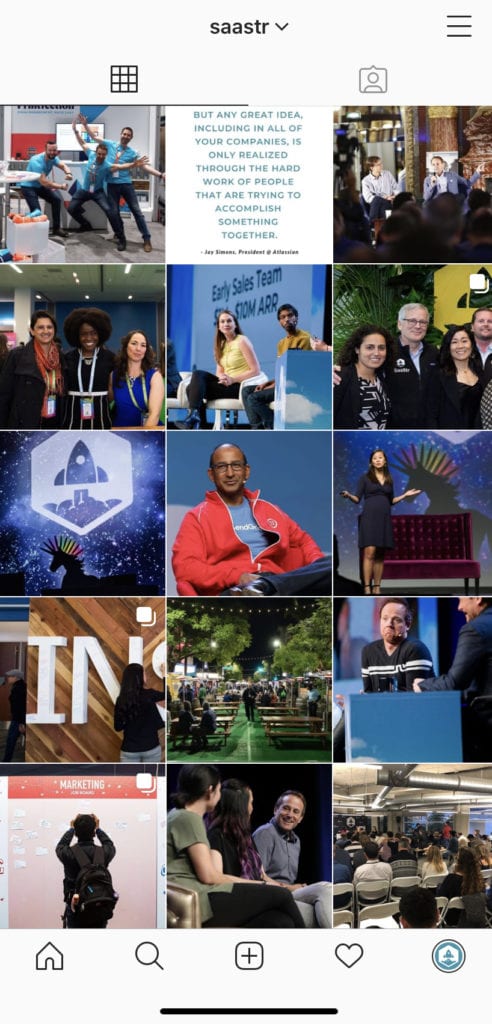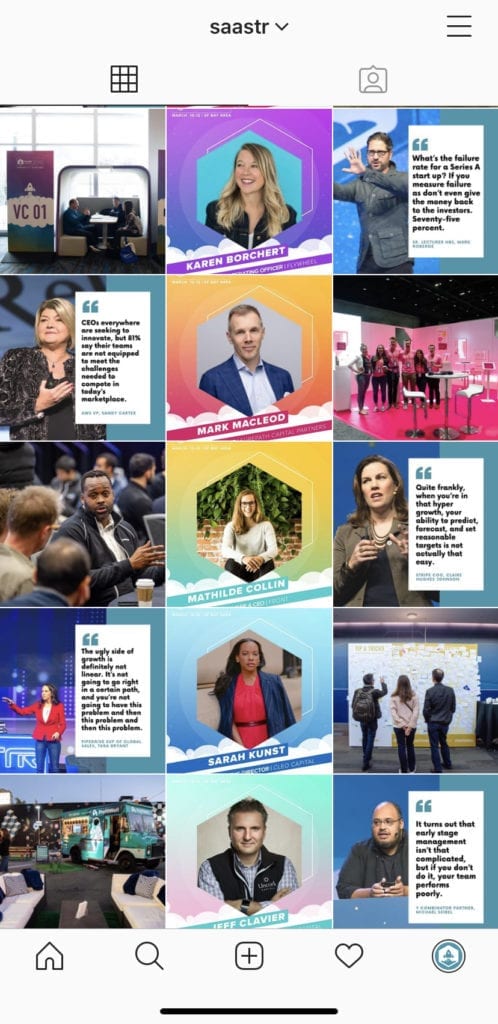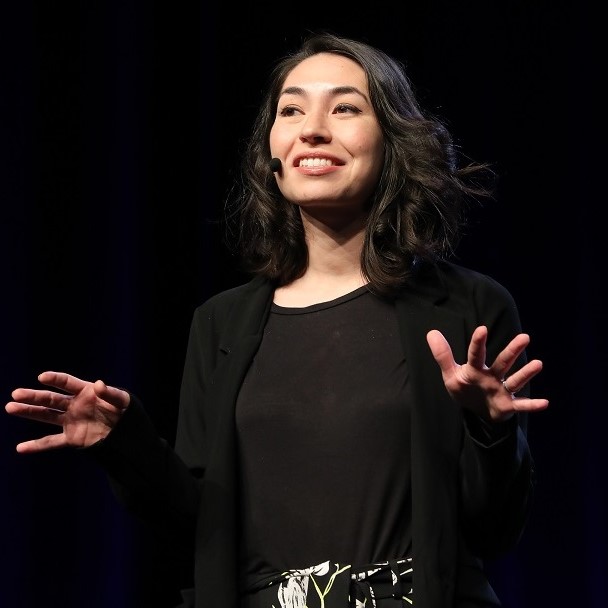It’s no secret that SaaStr is a small unit, we’re made up of less than 10 full-time employees. Sometimes having a lean team means that many of us temporarily wear several hats (sometimes all at once).
We haven’t ever truly had a dedicated social media manager on our Instagram. We’ve had some help on Twitter, Facebook, and LinkedIn with a few times where we had one individual spanning all four platforms but with so much to do, Instagram, our weakest social platform, fell by the wayside. Around September of this year, we stopped having inhouse help on our social media, specifically Instagram so it went quiet temporarily. We decided to take things into our hands and after one night of about 2-3 hours of scheduling, I automated the posts from September through March, the date of our Annual event.
Here is how our experiment turned out…
Here’s what we did before:
- Posts would go out once every 7 days or even 2 weeks. There was no true consistency in our posting times or dates.
- We had the platform Later.com but generally ended up manually updating Instagram with individual posts
- The content didn’t exactly align with our community’s interests or knowledge. We were very close but maybe slightly off. The small difference in posting that you could “win a round of funding” which implied winning VC funding and perhaps in return giving some equity to that VC or investor versus posting “win a cash prize!” during a pitch competition was just enough to be confusing. In short, we realized we had pretty specialized content geared towards marketers, salespeople, founders and more that needed a second look. This would be hard without more context if we were to use a contractor that was less familiar with our material.
- Our Instagrams never linked out to any links and we rarely engaged with followers over DMs or through comments.

SaaStr Instagram in 2019
Here’s what we did to fix and upgrade it:
- Posting consistently. The first thing we did was set up a schedule for Monday, Wednesday and Friday. To begin with, we started with two posts in a row featuring a photo around the events – SaaStr Annual, SaaStr Europa, SaaStr Scale, etc. Then we would add in one speaker social graphic, beautifully designed by our designer team. Lastly, we’d make a quote, relying on our dear old friend, Canva. We chose a template that fell in line with our gradient and showed the speaker itself to make it a bit more dynamic.
- We cared about our grid. It sounds silly to say but aesthetically we thought about how the posts would look if you looked at the grid on Instagram as a whole. This meant two of the same type post before breaking it up with something different. Though that seems counterintuitive it begins creating a grid effect with neat columns.
- We aligned our content to the core content our attendees and readers were interested in by grabbing quotes that were less broadly inspirational and more tactical as well as engaging with our community in our captions.
- We leveraged Later.com and scheduled ahead. We sat down and followed the schedule, scheduling from September to March and let the posts automatically publish off of the Later platform. We made sure each had tagged locations, tags and used the linkin.bio feature to link our Instagrams to relevant posts. Check it out for yourself here: linkin.bio/saastr
- We answered direct messages coming through and showcased some of our superfan community members who tagged us in posts and stories.

SaaStr Instagram in 2020
So, what were the results?
Our followers went from 1,292 followers on September 12th, 2019 to 2,556 today (and counting). At first, we weren’t sure how much time we should invest in Instagram, to begin with as it’s not really our core audience. Instagram tends to skew a bit younger in demographics and is highly visual which isn’t what the bulk of our content is. Our readers come for tactical content in SaaS which can be hard to translate to a photo. Over the course of about 26 weeks, with automated Instagram posts, we grew 97.8%. While that is an astronomical figure, we did start from a pretty low base and only began posting on our Instagram in February of 2019 so some exponential growth was to be expected. In the end, this was and continues to be the best solution for us – a streamlined, low touch way to engage with our community but without having a dedicated person working on our Instagram full time. For a startup our size, it’s been crucial! We’ll keep you posted as we continue our experiment.
Have you gone down this path yourselves? How are you optimizing social for your company? Share in the comments below, we’d love to hear from you!

